Japan's Rice Field Art and 10 Famous Rice Paddies
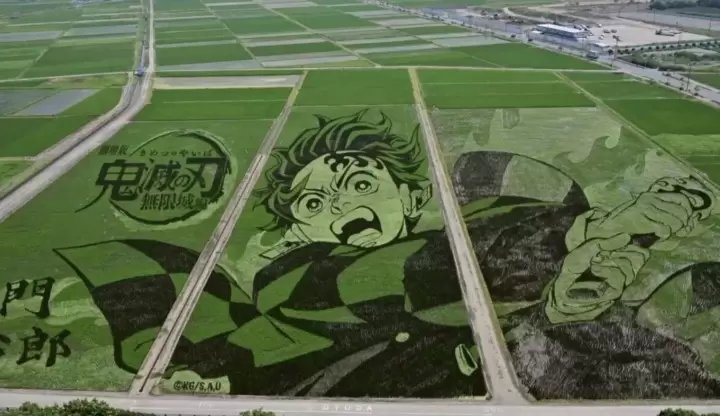
Many of Japan's rice fields have become tourist attractions. Discover 10 famous rice paddies in Japan, as well as paddy art sites where the fields become the canvas for breathtaking artwork!
Rice Paddies: The Original Scenery of Japan
In Japan, where rice is a staple food, rice paddies are also popular for their scenic beauty. The idyllic landscapes of rice paddies evoke a nostalgic and soothing atmosphere.
This article introduces 10 terraced rice fields that are famous for their beauty and rice paddy art sites that showcase Japan's original scenery.
The rice paddy art in Gyoda, a city near Tokyo, has been gathering global attention for its scale and artfulness. In 2025, it features an artwork created in collaboration with Demon Slayer.
Japan's Rice Paddies
Rice Cultivation in Japan: Basic Information
10 Famous Terraced Rice Fields in Japan
1. Oyama Senmaida in Chiba
2. Terasaka Terraced Rice Paddies in Saitama
3. Shikamura Terraced Rice Fields in Yamagata
4. Hoshitoge Rice Terraces in Niigata
5. Shiroyone Senmaida Rice Terraces in Ishikawa
6. Inagura Rice Terraces in Nagano
7. Maruyama Senmaida Rice Terraces in Mie
8. Nii Rice Terraces in Kyoto
9. Tashibunosho in Oita
10. Terraced Rice Fields of Hamanoura in Saga
Rice Paddy Art Sites in Japan
1. Gyoda City in Saitama, near Tokyo
2. Koshigaya City in Saitama, near Tokyo
3. Tsukuba Mirai City in Ibaraki
4. Inakadate in Aomori
Read also
Rice Cultivation in Japan: Basic Information
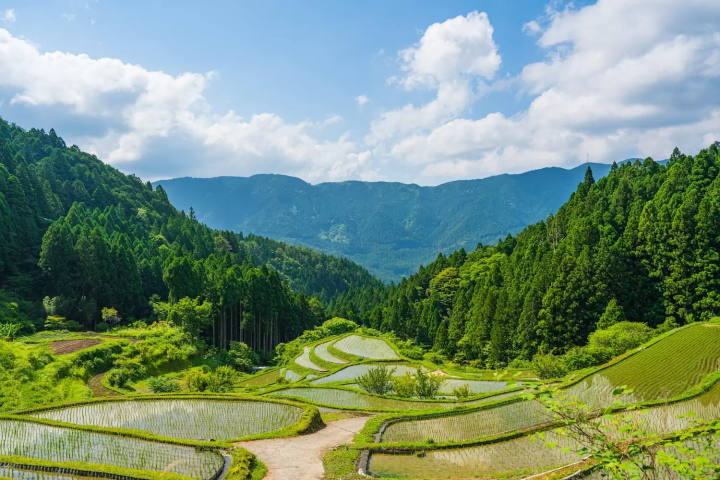
Photo by Pixta
Rice paddies are land that has been flooded with water for the purpose of growing rice.
Rice paddies are also called “rice fields,” and our staple food, rice, is harvested here. Rice paddies serve not only as a place to cultivate rice but also play a role in preventing local flooding and landslides by temporarily storing rainwater during heavy downpours.
One of the beautiful landscapes of rice paddies is terraced rice fields, which are created in a stepped manner on sloped land, such as the sides of mountains. Japan is home to many beautiful terraced fields, and there are numerous famous spots recognized as tourist attractions.
The Flow Rice Cultivation in Japan
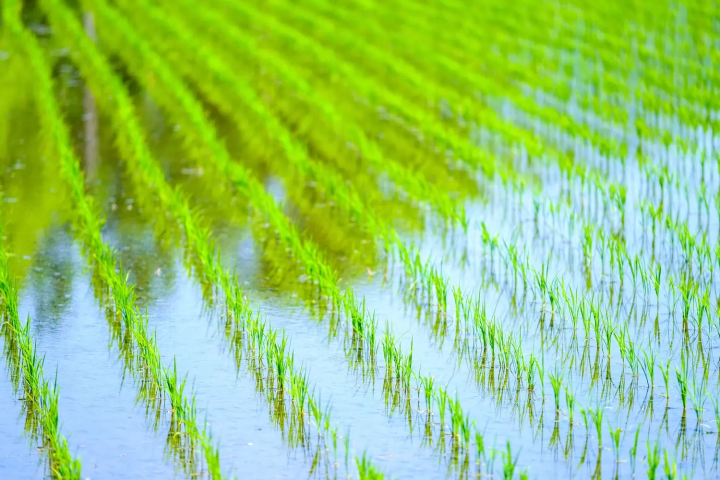
Photo by Pixta
The following is the procedure for rice cultivation:
1. Soil Preparation
2. Seedling Preparation
3. Planting
4. Water Management
5. Adding Fertilizers
6. Draining Water
7. Reaping
Rice planting takes place around April to June, where the grown seedlings are planted using a rice planting machine. After planting, the small green seedlings are neatly aligned in rows. The water surface reflects the sunlight and the surrounding landscape, creating a beautiful scene.
Rice harvesting occurs around September to October, when the rice is collected. As the time for harvesting approaches, the entire rice field turns a golden color, presenting a magnificent view.
The Essential Role of Water
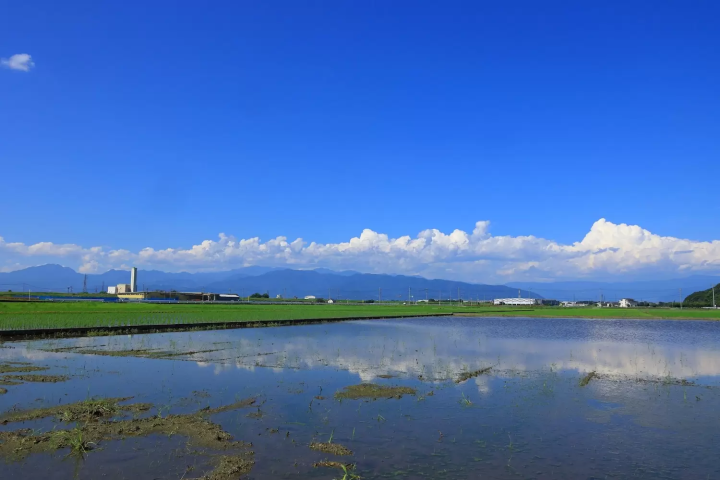
Photo by Pixta
There are various purposes for flooding rice paddies with water.
Having water helps the soil become a suitable condition for crops to grow, aiding the growth of rice. The water stored in the rice paddies seeps into the ground, during which time substances unsuitable for drinking water are removed from the soil, thus contributing to water quality purification.
The water in rice paddies also plays a role in regulating the surrounding temperature and humidity. As moisture evaporates from the water surface and rice ears, heat is drawn from the surroundings, creating a natural cooling effect.
Moreover, water has the property of being hard to heat and slow to cool, providing protection for rice from the cold. This thermal insulation effect enables the rice to be safeguarded from low temperatures and cold damage immediately after planting.
10 Famous Terraced Rice Paddies in Japan
Read on to learn 10 of Japan's famous terraced rice fields, some of which have been designated World Heritage sites.
1. Oyama Senmaida in Chiba
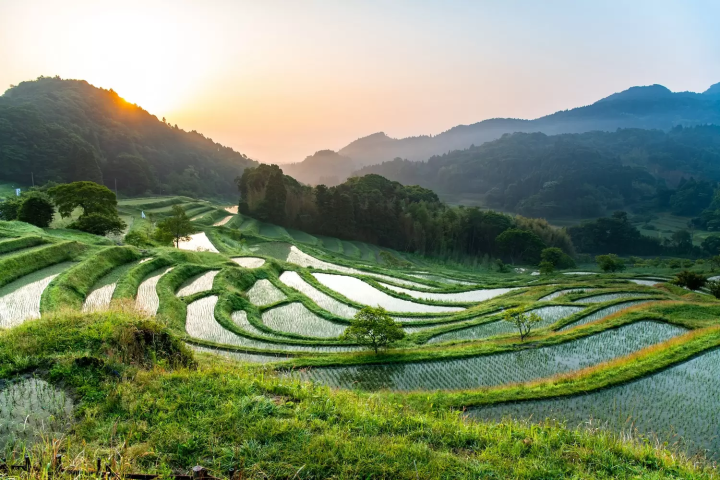
Photo by Pixta
Oyama Senmaida, located in Kamogawa City, Chiba Prefecture, is a famous terraced rice field selected as one of Japan's Top 100 Terraced Rice Fields. Visitors can enjoy beautiful scenery throughout the four seasons, from the water-filled landscape before rice planting to the snowy views in winter.
It is easily accessible, being just an hour and a half by car from Tokyo, and is known as "the closest terraced rice field to Tokyo." Every October, the fields are illuminated, creating a fantastic scenery that captivates visitors.
Oyama Senmaida
Address: Chiba, Kamogawa, Hiratsuka 540
Access:
By Car: 20-minute drive from Kyonan Hota Interchange (Futtsu Tateyama Road).
By Train: From JR Awa-Kamogawa Station, take the local bus (Nagasa Line) to Oyama Senmaida Iriguchi bus stop. From there, it is a 20-minute walk to the paddy.
Website: https://www.visitchiba.jp/things/oyama-senmaida/
2. Terasaka Terraced Rice Paddies in Saitama
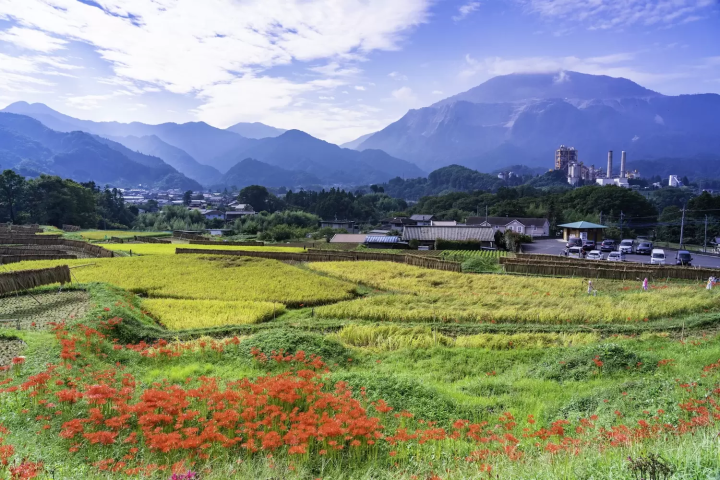
Photo by Pixta
The Terasaka Terraced Rice Paddies, located in Chichibu, Saitama Prefecture, can be easily accessed from Tokyo. These paddies are the largest of their kind in Saitama and attract a large number of visitors.
The rural scenery, with Mount Buko in the background, looks spectacular! The red spider lilies blooming in September create a stunning contrast in the landscape.
Terasaka Terraced Rice Paddies
Address: Saitama, Chichibu, Yokoze-machi, Oh-aza Yokoze
Access:
By Car: An hour's drive from Sayama Hidaka Interchange (Ken-O Expressway)
By Train: 15-minute walk from Yokoze Station (Seibu Line)
Website: https://www.chichibu-omotenashi.com/en/guide/spot_16.html
Read also
3. Shikamura Terraced Rice Fields in Yamagata
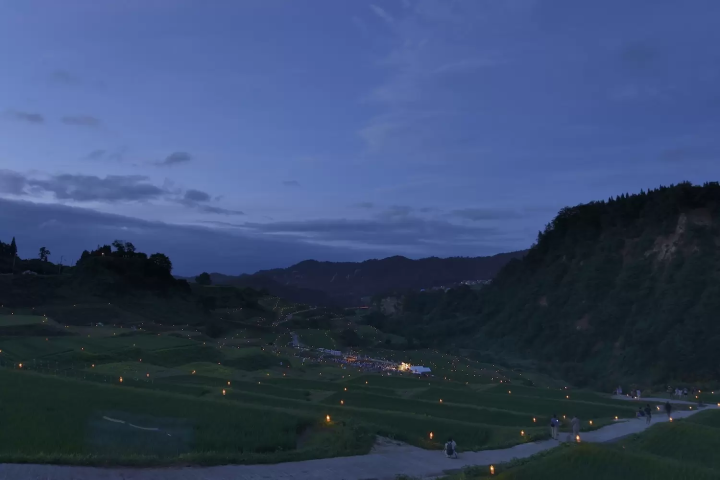
Photo by Pixta.
The Shikamura Terraced Rice Fields is a terraced rice field that boasts an impressive area of approximately 120 hectares, making it one of the largest in the Tohoku region.
The surrounding area is a member of the "Most Beautiful Villages in Japan Alliance," promoting the conservation of beautiful nature.
On the first Saturday of July, the Hotarubi Concert is held, where around 1,200 firefly lanterns light up, creating a magical landscape for visitors to enjoy.
Shikamura Terraced Rice Fields
Address: Yamagata, Mogami, Ohkura-mura, Minami-yama
Access:
By Car: 30-minute drive from Funagata Interchange (Tohoku-Chuo Expressway)
By Train: 35-minute taxi ride from JR Shinjo Station
Website: https://www.tohokukanko.jp/en/attractions/detail_1345.html
4. Hoshitoge Rice Terraces in Niigata
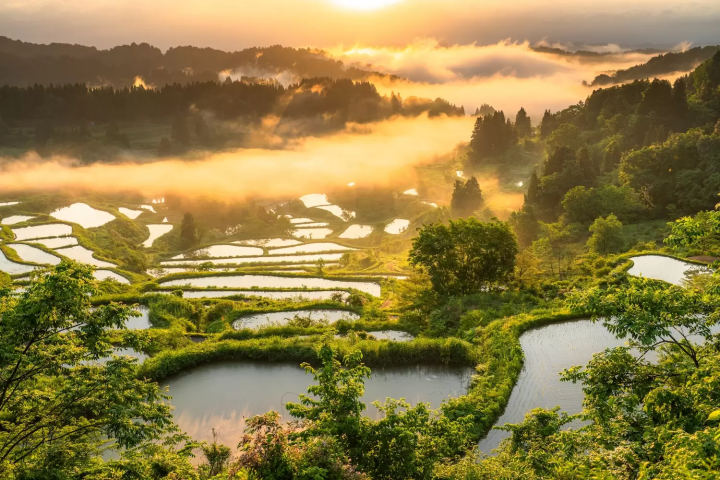
Photo by Pixta
The Hoshitoge Rice Terraces refers to around 200 rice paddies of various sizes, spreading across the hillside in Niigata's Tokamachi like the scales of a fish.
This terraced rice field is particularly popular during the times when a sea of clouds forms and the water mirrors shine, attracting photographers and tourists from all over the country.
Hoshitoge Rice Terraces
Address: Niigata, Tokamachi, Thge
Access:
By Car: 50-minute drive from Joetsu Interchange (Hokuriku Expressway)
By Train: 20-minute taxi ride from Matsudai Station (Hokuhoku Line)
Website: https://www.tokamachishikankou.jp/en/spot/hoshitougenotanada-2/
5. Shiroyone Senmaida Rice Terraces in Ishikawa
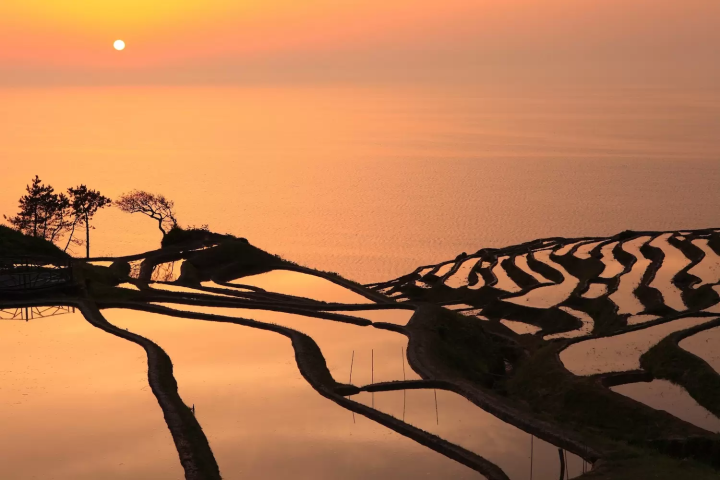
Photo by Pixta.
At Shiroyone Senmaida Rice Terraces, facing the Sea of Japan, you can enjoy breathtaking views that extend all the way to the coast.
From late April to early May, when the rice paddies are flooded with water, the water surface shimmers in orange during sunset, creating a beautiful landscape.
Shiroyone Senmaida Rice Terraces
Address: Ishikawa, Wajima City, Shiroyone 99-5
Access:
By Car: About 30 minutes from the Noto Toll Road Nozaki Satoyama Airport IC
By Bus: About 15 minutes by bus from Wajima Station
Website: https://www.ishikawatravel.jp/en/spots/senmaida-rice-terraces/
6. Inagura Rice Terraces in Nagano
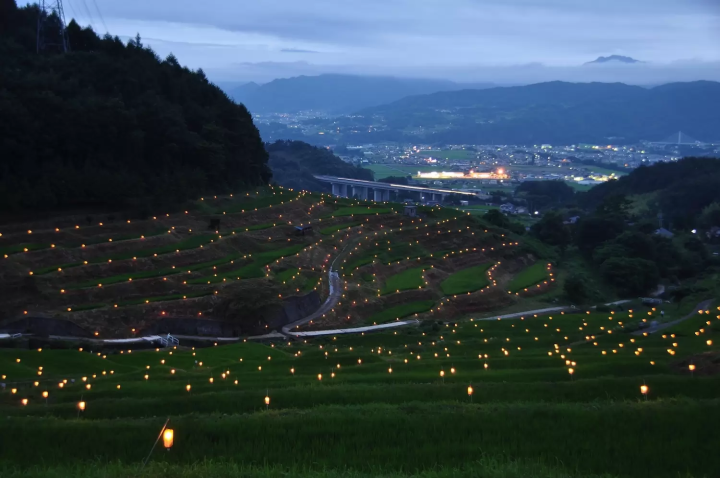
Photo by Pixta
The Inagura Rice Terraces in Nagano Prefecture is a place where you can feel the magnificent nature with the distant view of the Alps.
At the end of July, the 'Firefly Festival' is held here, lighting about 7,000 candles, further enhancing the beautiful scenery.
Inagura Rice Terraces
Address: Nagano, Ueda, Tonoshiro 2889-1
Access:
By Car: 30-minute drive from Ueda Sugadaira or Tobu Yunomaru Interchange (Joshin-etsu Expressway)
By Train: 20-minute taxi ride from Ueda Station
Website: https://go.ueda-kanko.or.jp/spot/inaguras-rice-terraces/
7. Maruyama Senmaida Rice Terraces in Mie
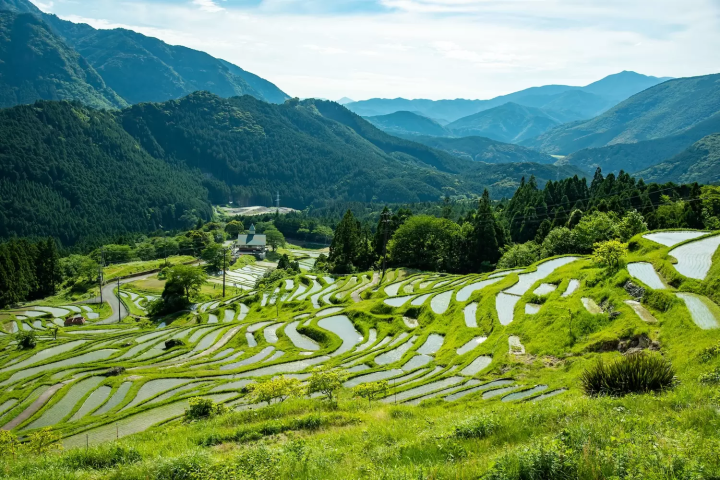
Photo by Pixta
Maruyama Senmaida, located in Kumano, is a terraced rice field considered to be the most picturesque rice field scenery in Japan.
Over 1,300 small rice paddies are layered upon each other, forming a stunning landscape. If you want to take in the entire view, the observation deck at Maruyama Senmaida is recommended.
Maruyama Senmaida Rice Terraces
Address: Mie, Kumano, Kiwa-cho, Maruyama
Access:
By Car: 30-minute drive from Kumano Ohdomari Interchange (Kumano Owase Expressway)
Website: https://www.city.kumano.lg.jp/vr/en/maruyamasenmaida/index.php
8. Nii Rice Terraces in Kyoto
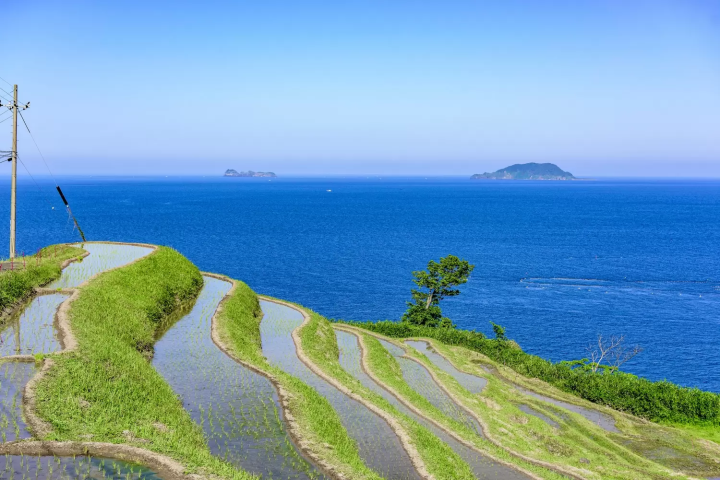
Photo by Pixta.
The Nii Rice Terraces, located in Kyoto's Ine Town, is a beautiful place where the contrast between the rice terraces and the Sea of Japan can be seen.
The rice terraces that extend along the steep slopes are also known as part of the Tango Amanohashidate Oeyama Quasi-National Park, located in the coastal area of the Tango Peninsula.
Nii Rice Terraces
Address: Kyoto, Yosa, Ine-cho, Nii
Access:
By Car: 50-minute drive from Yoza Amano-Hashidate Interchange (Kyoto Jukan Expressway)
By Train: One-hour bus ride from Amano-Hashidate Station (Kyoto Tango Railway Miyatoyo Line)
Website: https://www.kyototourism.org/en/sightseeing/552/
9. Tashibunosho in Oita
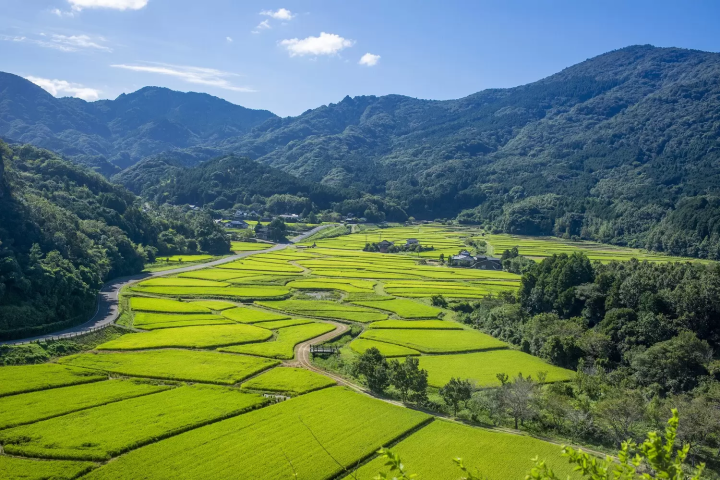
Photo by Pixta
Tashibunosho in Oita's Kunisaki Peninsula is a globally recognized agricultural heritage site with a magnificent view.
These rice paddies were first created in the Heian period (794-1185), making them the oldest in Japan. Back then, the rice paddies didn't have the rectangular shape that is common today. Their irregular shape is closer to nature.
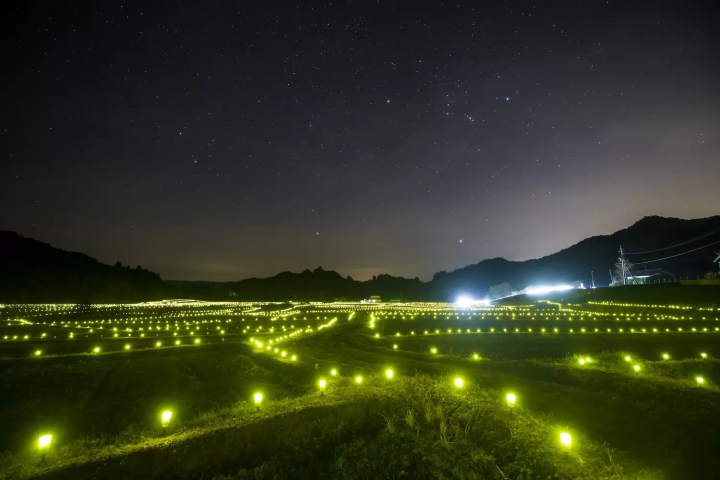
Photo by Pixta
Tashibunosho features traditional rural landscapes, making it a perfect place for those who wish to enjoy Japan’s original scenery. The rice fields are lit up in winter, highlighting their charm.
Tashibunosho Rice Paddies
Address: Oita, Bungo-Takada, Tashibu-Osaki 2596
Access:
By Car: 30-minute drive from Oita Bunka Nogyo Koen Interchange
Website: https://www.onie.jp/en/cultura/detail/463166e0-0dd8-4edb-b6ac-38269f93d453
10. Terraced Rice Fields of Hamanoura in Saga
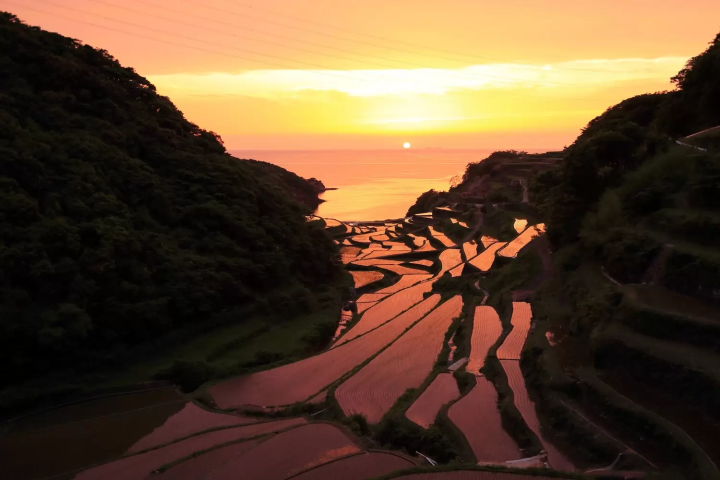
Photo by Pixta.
The Terraced Rice Fields of Hamanoura located in the northwest of Genkai, Saga Prefecture, are terraced rice fields that spread along the lower reaches of the Hamanoura River.
The rice terraces, which step down from the coastline, create a beautiful contrast between the sea and the fields. Especially during sunset, you can enjoy the spectacular view of the sea and rice terraces bathed in orange hues.
Terraced Rice Fields of Hamanoura
Address: Saga, Higashi-Matsuura, Genkai-cho, Hamanoura
Access:
By Car: One-hour drive from Taku Interchange. 30-minute drive from Kitahata Interchange (Nishi-Kyushu Expressway).
By Train: From Ohteguchi Bus Center at JR Karatsu Station, take the Showa Bus to the Hamanoura bus stop. It is a 5-minute walk to the rice terrace.
Four Places to Enjoy Rice Field Artwork
Rice field artwork, or rice paddy art, refers to a massive form of art that uses rice fields as a canvas to create pictures with rice plants. Colored ornamental rice, such as red and purple varieties, may also be used.
We introduce four locations in Japan that are famous for their spectacular rice paddy art festivals.
1. Gyoda City in Saitama, near Tokyo

Photo by GYODA OMOTENASHI TOURISM BUREAU
The rice paddy art in Gyoda City, Saitama Prefecture, is recognized by Guinness as the largest rice paddy art in the world and has become a seasonal highlight of Gyoda City from early summer to autumn.
In 2025, an artwork created in collaboration with the popular anime "Demon Slayer: Kimetsu no Yaiba" will be the highlight. The rice paddy art will feature Tanjiro's face.
The best viewing time is from mid-July to mid-October, and it can be seen from the observation room of Kodai Hasu no Sato, a facility dedicated to the cultivation of lotus flowers.
A simple way to enjoy this paddy art site is to join a summer day tour from Tokyo that includes a visit to Kawagoe, the rice paddy art sites in Gyoda, and Nagatoro - all located in Saitama Prefecture.
Gyoda Paddy Art
Address: Saitama, Gyoda, Kobari 2375-1
Access: From Gyoda Station (JR Takasaki Line), take the local bus to Kodai Hasu no Sato bus stop.
Period: From mid-July to mid-October.
Official website: https://www.gyoda-kankoukyoukai.jp/spot/669
Read also
2. Koshigaya City in Saitama, near Tokyo
If you're looking for an easily accessible spot from central Tokyo, the rice paddy art in Koshigaya City, Saitama Prefecture, is highly recommended.
It can be viewed from the observatory of Higashi-Saitama Resources and Environment Association (Reuse) Factory No. 1.
Since there are set reception hours for visiting the observation deck, it’s a good idea to check before you go.
Koshigaya Rice Paddy Art
Address: Saitama, Koshigaya, Mashibayashi 3-2-1
Access: From Koshigaya Lake Town Station (JR Musashino Line), take the Taro's Bus to Mori-Nishikawa bus stop. It is a 6-minute walk from there.
Period: From late July to mid-August
Official website: Not available
3. Tsukuba Mirai City in Ibaraki
In Tsukuba Mirai City, where rural landscapes and natural environments remain outside the area around the station and along national highways, you can also enjoy rice paddy art.
This location uses of farmland under the Tsukuba Express elevated line for creating the rice paddy art.
Tsukuba Mirai City Rice Paddy Art
Address: Ibaraki, Tsukuba Mirai, Shimo-Ome
Access: 25-minute drive from Yawara Interchange (Joban Expressway).
Period: From mid-July to September
Official website: Not available
4. Inakadate in Aomori
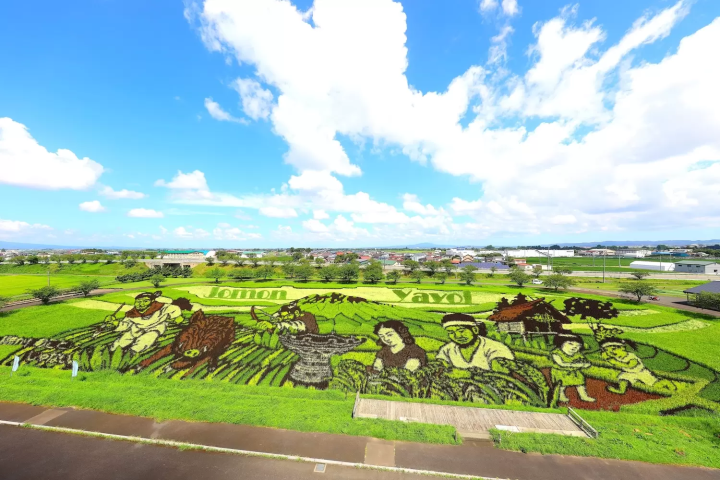
Photo by Pixta
In Inakadate Village, located in the southern part of the Tsugaru Plain in Aomori Prefecture, rice paddy art is held at two locations.
You can view different artworks from the Inakadate Village Observation Deck and the Yayoi no Sato Observation Deck.
A free shuttle bus operates between the two rice paddy art sites, making transportation smooth.
Inakadate Village
Address: Aomori, Minami-Tsugaru, Inakadate, Aza Nakatsuji 123-1
Access: 10-minute taxi ride from JR Kawabe Station
Period: From mid-July to mid-August
Official website: http://www.inakadate-tanboart.net/
Enjoy the View of Japan's Beautiful Rice Paddies
Terraced rice fields and rice paddy art are breathtaking views that can be enjoyed in naturally rich Japan, where rice is a staple food.
How about visiting the terraced rice fields and rice paddy art to refresh yourself in nature?
Read also
Written by Cakutama Editorial Team.
This is the official account of MATCHA's editorial department. Our articles feature useful travel information for visitors to Japan, from how-to guides to recommended places to visit.



![[Yokoze Town, Chichibu District, Saitama Prefecture] The Terasaka Rice Terrace Firefly Bonfire Festival 2024 will be held on Saturday, July 6th!](https://resources.matcha-jp.com/resize/200x2000/2024/06/29-185586.webp)











![[Castle Town Gyoda] 3 Recommended Tourist Spots and Gourmet Foods!!](https://resources.matcha-jp.com/resize/200x2000/2024/03/12-171689.webp)

![[Hyogo Prefecture Yabu City Prefecture] Take a trip to enjoy the best starry sky in Japan! 3 recommended spots](https://resources.matcha-jp.com/resize/200x2000/2024/06/30-185692.webp)





























![[2026] Top 5 Strawberry Picking Spots in Tokushima, Naruto| Farms and Access Guide for January to May](https://resources.matcha-jp.com/resize/720x2000/2025/03/06-227165.webp)


